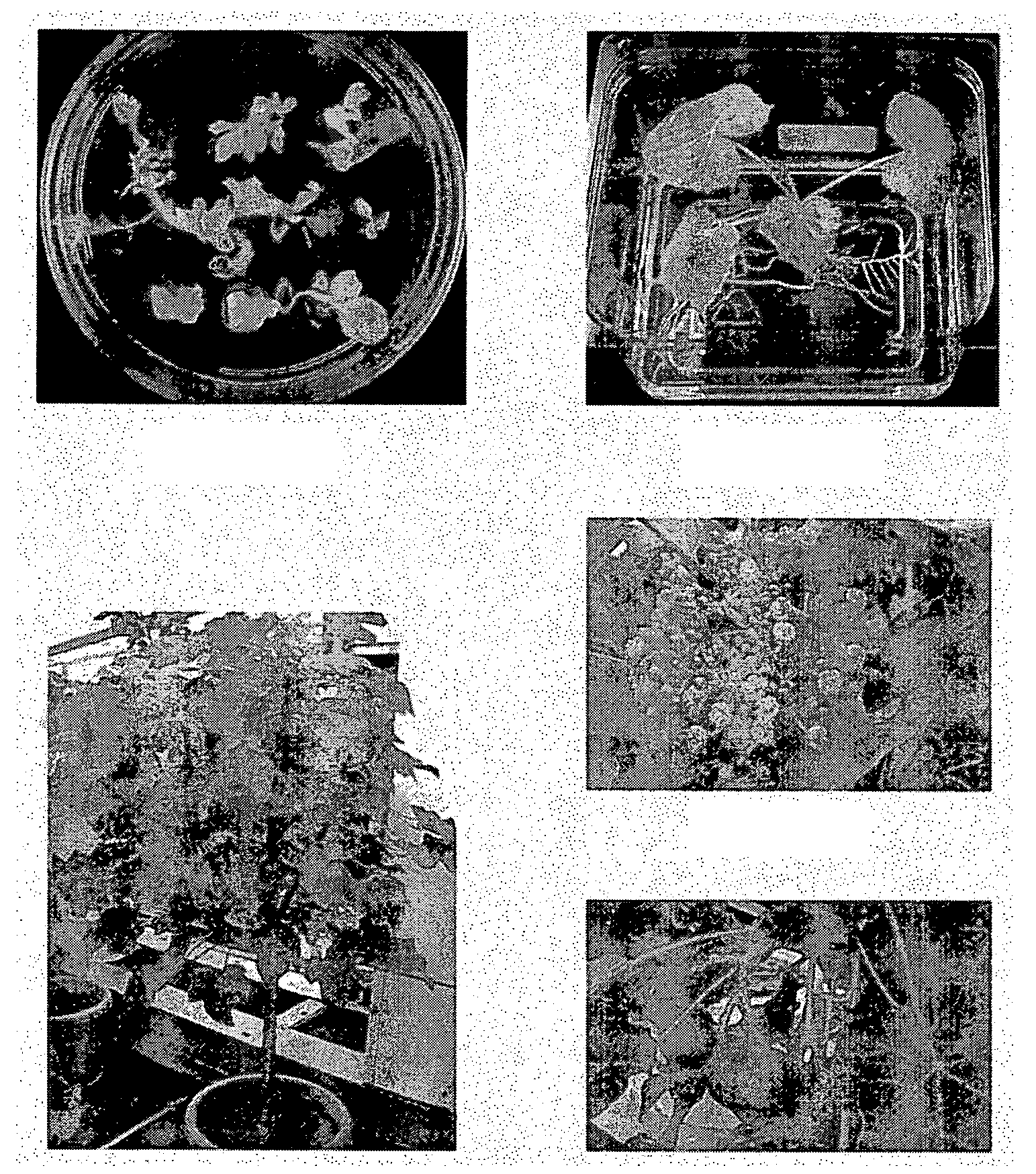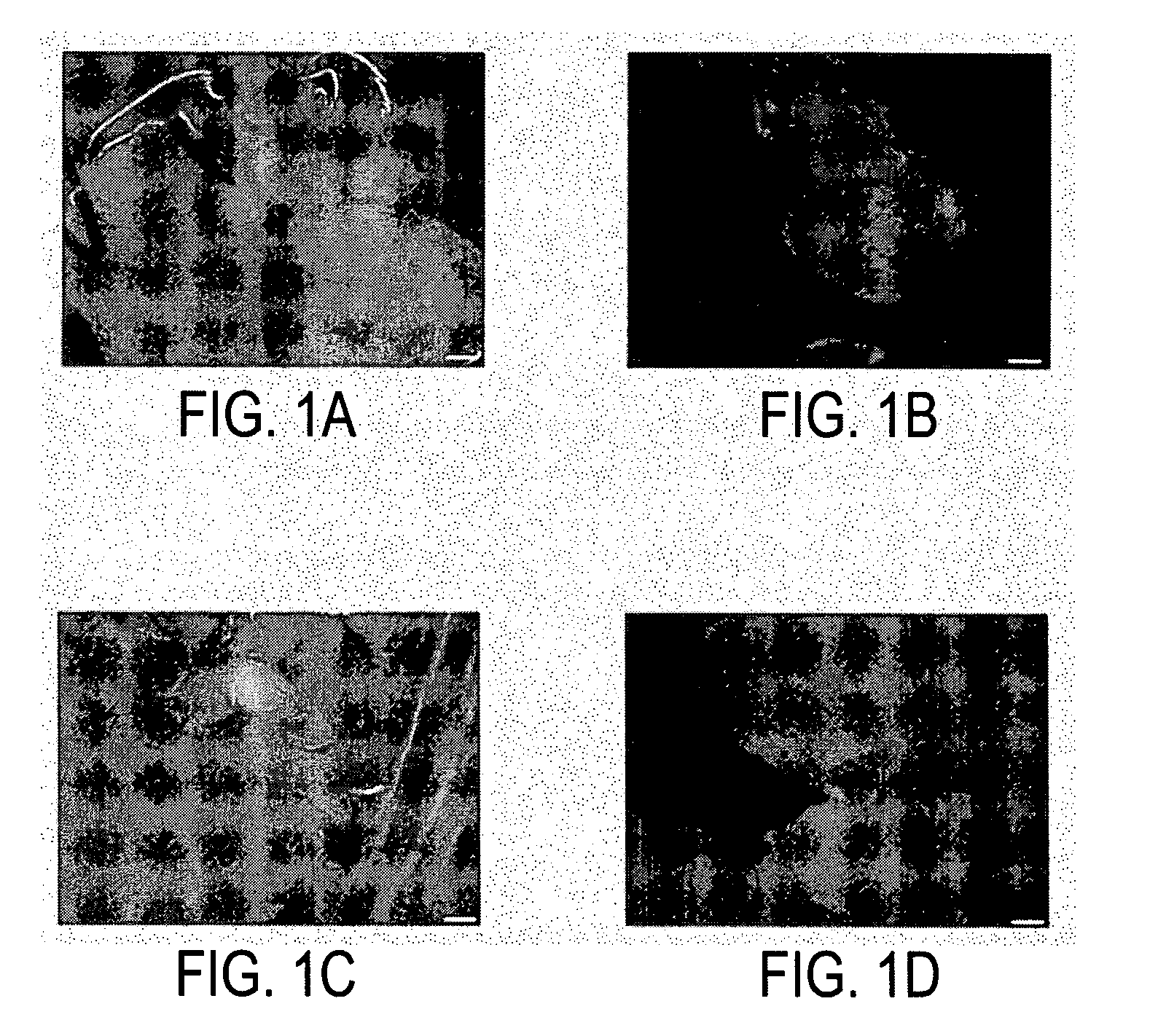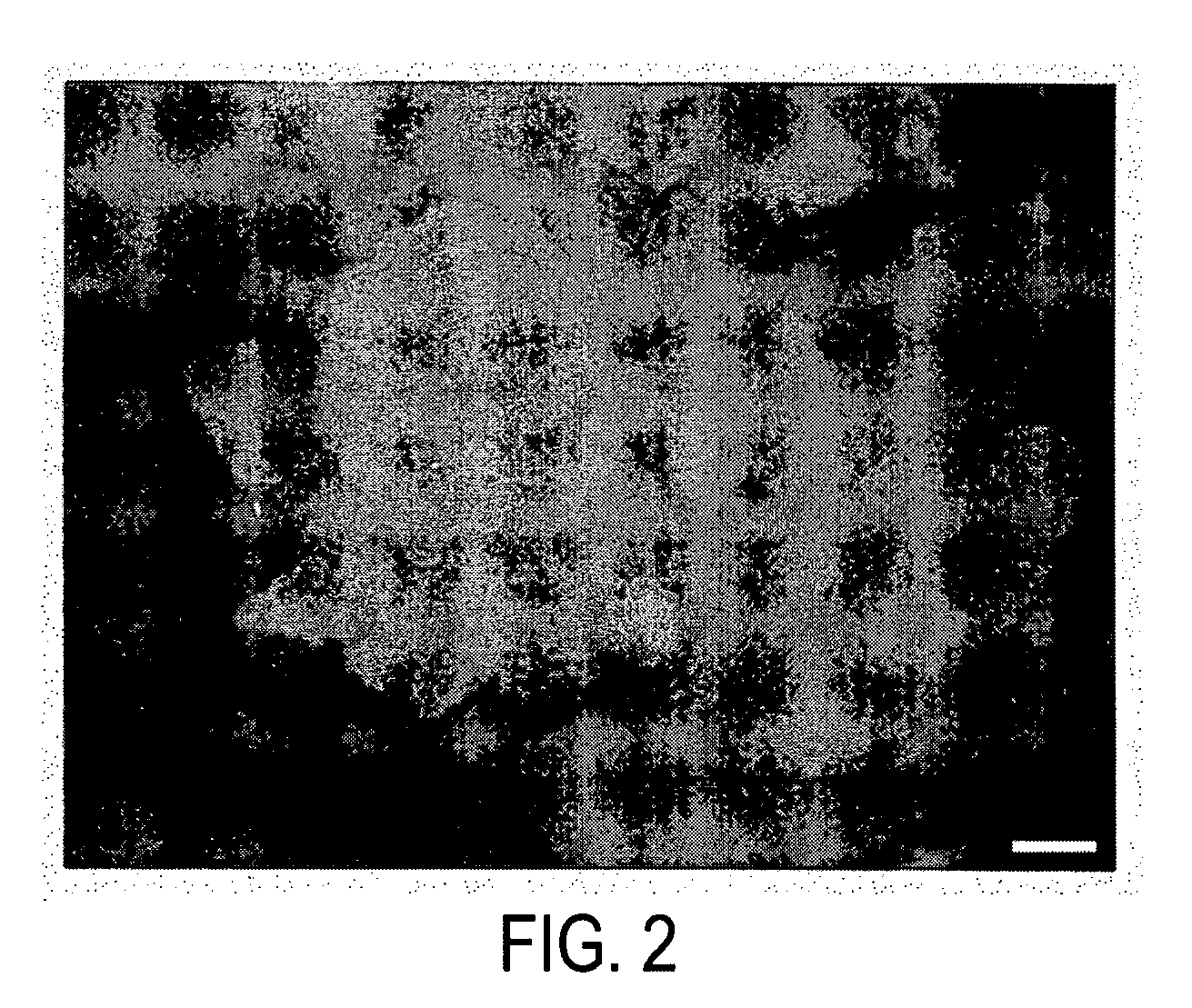Regeneration and mass propagation of jatropha curcas through somatic embryogenesis
- Summary
- Abstract
- Description
- Claims
- Application Information
AI Technical Summary
Benefits of technology
Problems solved by technology
Method used
Image
Examples
example 1
Media
[0047]5K MS salts, B5 vitamins, 30 g / l sucrose, 2.2 g / l phytagel, 5 mg / l 2,4-D, 0.1 mg / l kinetin, pH 5.8[0048]10K MS salts, B5 vitamins, 30 g / l sucrose, 2.2 g / l phytagel, 10 mg / l 2,4-D, 0.1 mg / l kinetin, pH 5.8[0049]d20 MS salts, B5 vitamins, 30 g / l sucrose, 2.2 g / l phytagel, 2,4-D 20 mg / l 2,4-D, pH 5.8[0050]EGA0 NH4NO3-deficient MS salts, B5 vitamins, 30 g / l glucose, 2.4 g / l phytagel, 1 g / l glutamine, 0.5 g / l asparagines)[0051]EGAh NH4NO3-deficient MS salts B5 vitamins, 30 g / l sucrose, 2.4 g / l phytagel, 1 g / l glutamine, 0.5 g / l asparagine, 0.95 g / l KNO3)[0052]DGA NH4NO3-free MS salts, B5 vitamins, 30 g / l sucrose, 2.2 g / l phytogel, 1 g / l glutamine, 0.5 g / l asparagine, pH 5.8.[0053]G13 MS salts, B5 vitamins, 3 mg / l GA3, 30 g / l sucrose, 2.2 g / l phytagel, pH 5.8.[0054]G12-1 1 / 2MS salts, 1 / 2B5, 0.01 mg / l naphthaleneacetic acid (NAA), 200 mg / l casein hydrolysate, 15 g / l sucrose, 3 g / l phytagel, pH 5.8.
[0055]See Murashige and Skoog (1962) for a general description of the MS media com...
example 2
Tissue Culture Conditions and Preparation of Aseptic Explants
[0056]Unless stated otherwise, plant materials were cultured in 90 mm Petri dishes which were placed on lighted shelves in a clean room with 16-8 hours day-night cycles and 28° C. constant temperature. Lighting was provided by 1-4 Phillips Fluotone tubes (36W) with about 60-150 μmol / m2 / s photosynthetic photon flux (PPF).
[0057]Seedlings were harvested on the 5th-7th days after sowing into the soil. Surface-sterilization was done by washing in 10% H2O2 for 20 minutes followed by rinsing with sterilized water for three times. Developing fruits were sterilized by soaking in 70% ethanol for 30 minutes followed by washing in sterilized water three times. Developing seeds and zygotic embryos were dissected with surgical scalper blades under a stereomicroscope placed inside a laminar flow.
[0058]Liquid cultures were performed in 65 mm plastic cylinder containers or 250 ml glass conical flasks that were placed in shakers set at 80 r...
example 3
Effect of Explants on Induction of Somatic Embryogenesis
[0059]We surveyed the effect of various explants and hormone concentrations on induction of somatic embryos in Jatropha curcas. Seedlings harvested 5-7 days after sowing into the soil were surface-sterilized and stem, leave, petiole, cotyledon, hypocotyls from the germinated seeds were excised and cut into approximately 0.5 cm in length. The explants were cultured on numerous solid media containing MS salts and B5 vitamins supplemented with 0-20 mg / l 2,4-D, 0-0.01 mg / l naphthaleneacetic acid (NAA) and 0-1 mg / l cytokinins, for example, kinetin, 6-benzylaminopurine (BAP), N6-(2-isopentenyl)adenine (2ip), zeatin or zeatin riboside. The explants and calli were subcultured about every two weeks in the same medium or in a hormone-free medium. Modified NH4SO4-free media with double concentration of KNO3 (1.9 g / l) were also used in the subculture. No somatic embryos were observed after at least four months in all the media tested.
PUM
 Login to View More
Login to View More Abstract
Description
Claims
Application Information
 Login to View More
Login to View More - R&D
- Intellectual Property
- Life Sciences
- Materials
- Tech Scout
- Unparalleled Data Quality
- Higher Quality Content
- 60% Fewer Hallucinations
Browse by: Latest US Patents, China's latest patents, Technical Efficacy Thesaurus, Application Domain, Technology Topic, Popular Technical Reports.
© 2025 PatSnap. All rights reserved.Legal|Privacy policy|Modern Slavery Act Transparency Statement|Sitemap|About US| Contact US: help@patsnap.com



